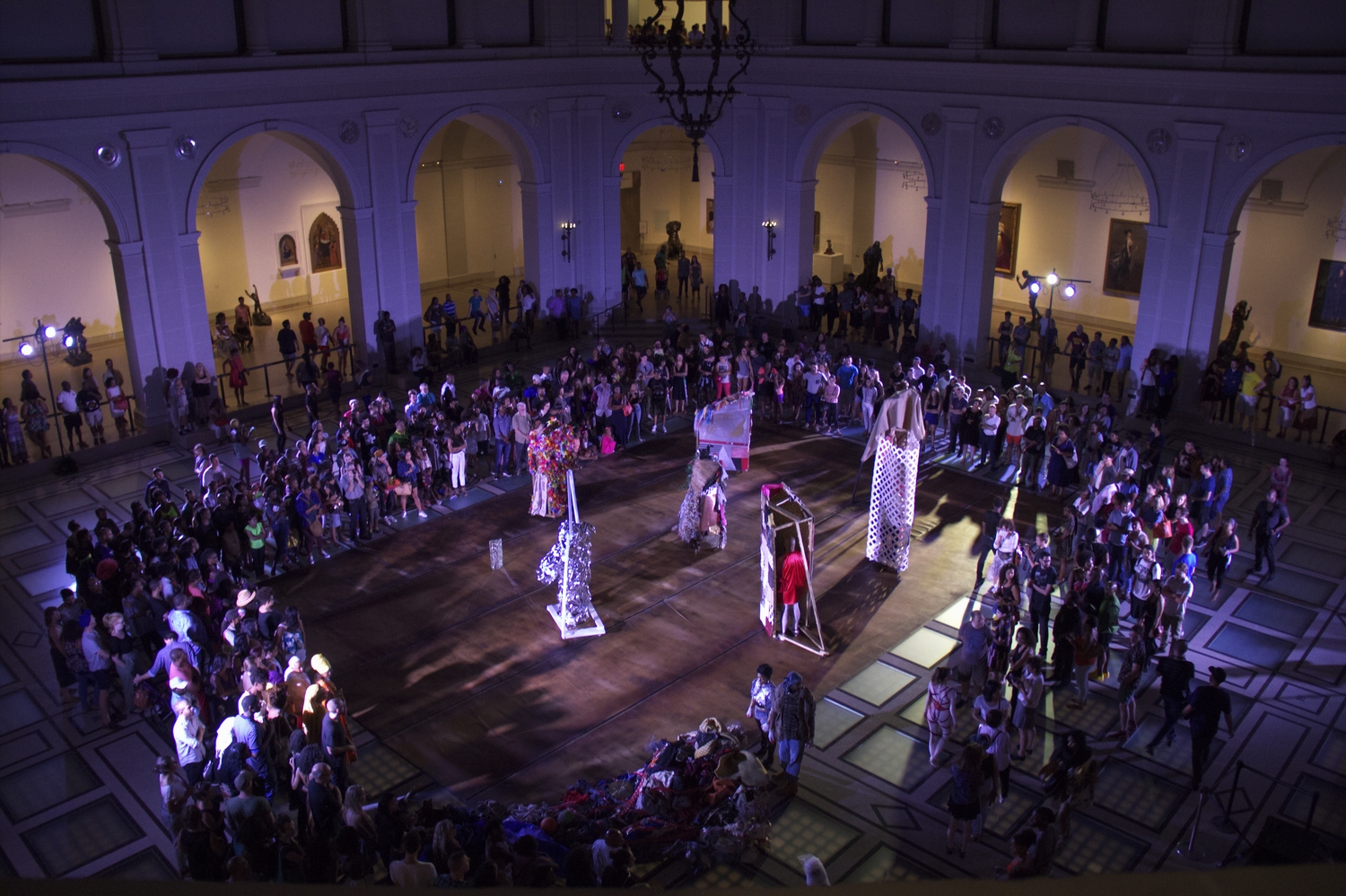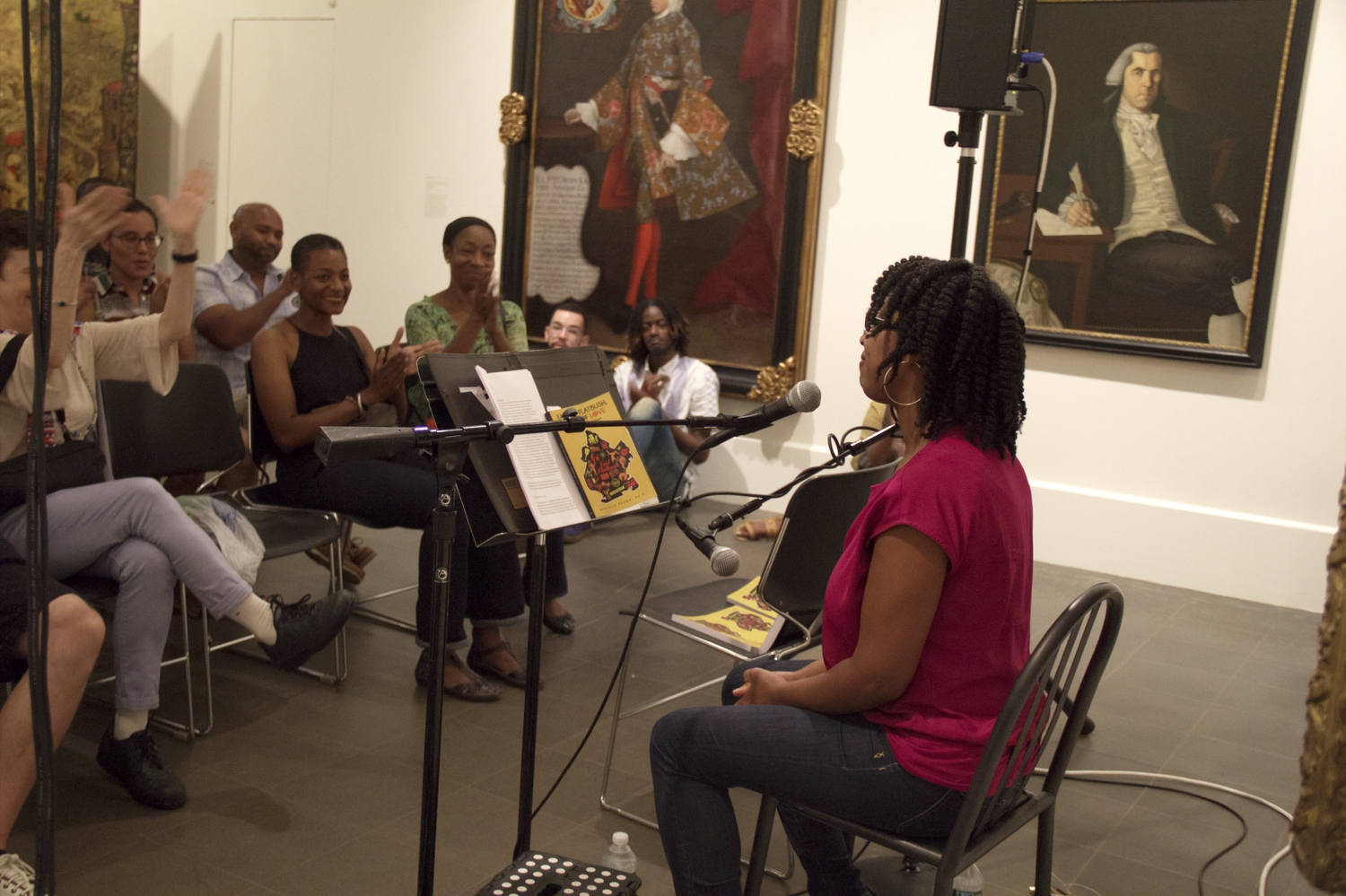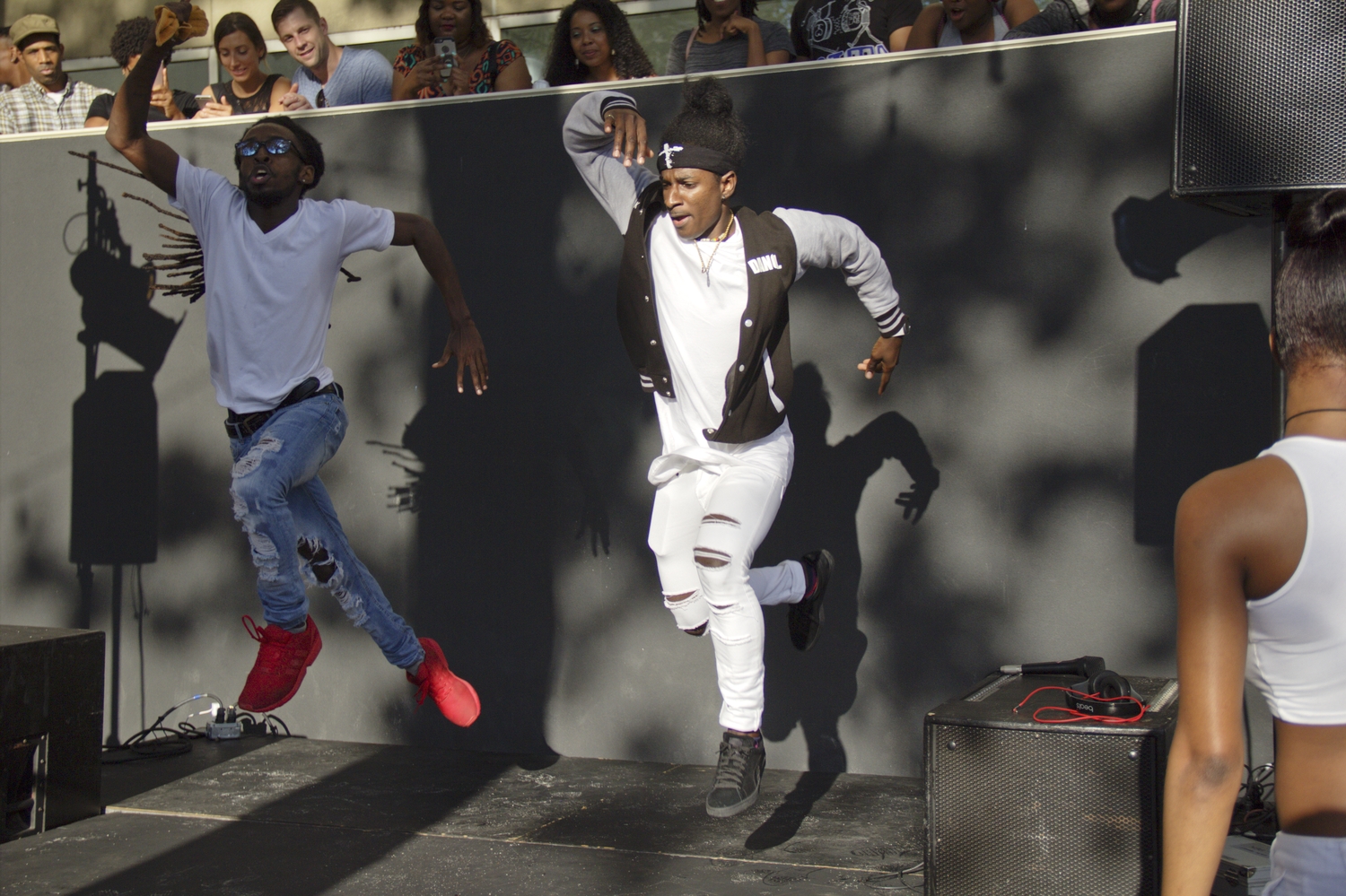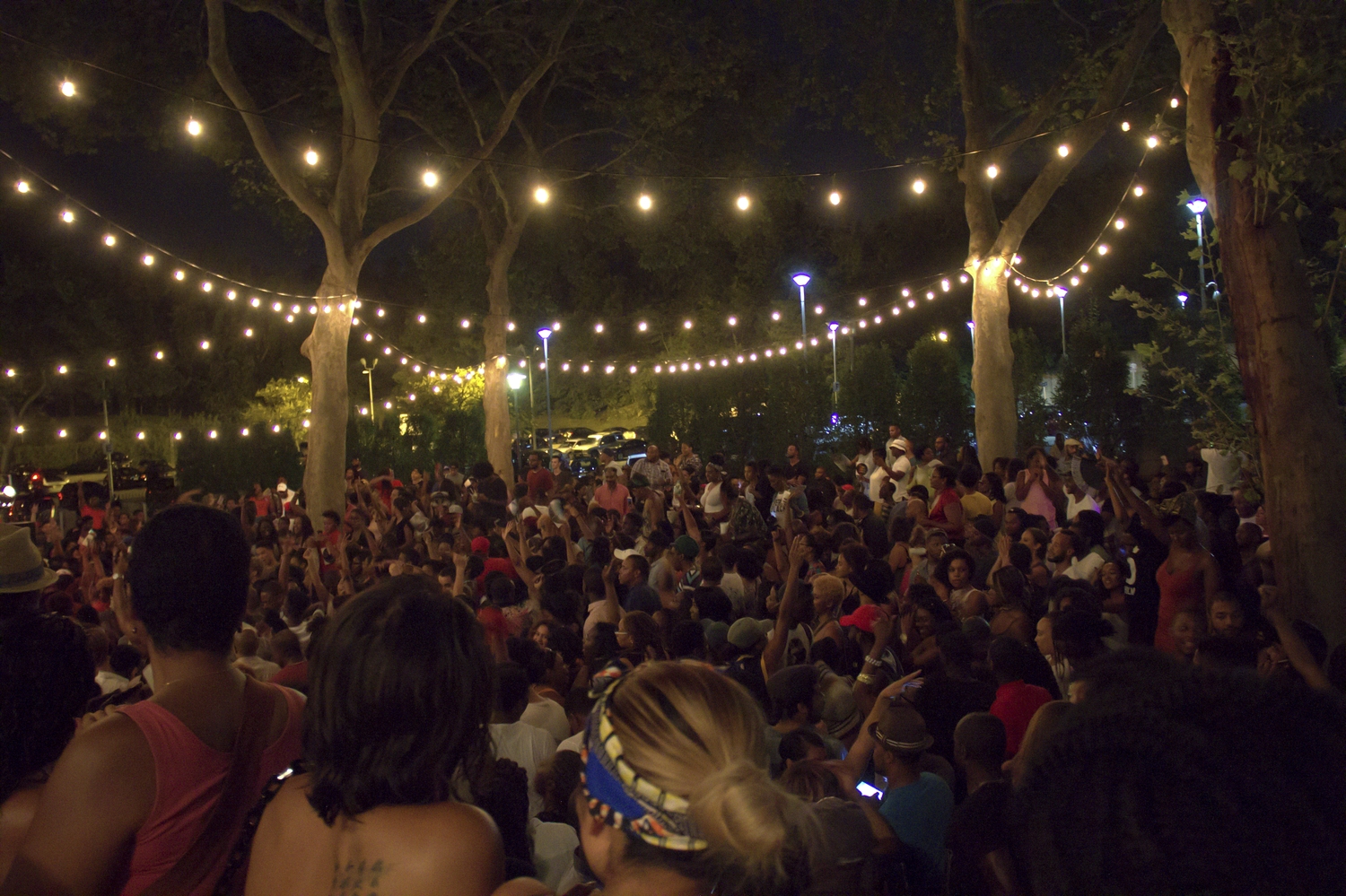This week’s contributing bloggers are Lauren Argentina Zelaya and Shelley Vidia Worrell. Lauren Argentina Zelaya is currently the Assistant Curator of Public Programs at the Brooklyn Museum where she curates and facilitates Target First Saturdays and other free and low-cost public programs that invite visitors to engage with special exhibitions and the collection in new and unexpected ways. Shelley Vidia Worrell is the Founder + Chief Curator of caribBEING, a thriving cultural platform that stands at the crossroads of film + art + culture. Since its founding Shelley has produced over 200 public programs in partnership with top cultural institutions most notably BRIC, Brooklyn Historical Society, Brooklyn Museum, MoCADA, Municipal Art Society, Queens Museum and Studio Museum in Harlem.
As the climate in our nation feels increasingly polarized and many members of our local communities grow anxious, what spaces exist for people to truly come together? It feels more urgent than ever that cultural institutions continue the work of fostering inclusive, welcoming environments for everyone. After all, where else but museums can you spend a few hours traveling across time and geography, encountering objects that span a wide range of cultures and perspectives? The Museum becomes a perfect setting for celebrating difference and deepening our understanding of ourselves and each other.
But how do we ensure that this space is joyous, interactive, authentic and reflective of the communities we wish to welcome?

Disguise artist Alejandro Guzmán’s performance Ganggang: Creative Misunderstanding Series featuring Abigail Deville, Christopher Manzione, Clifford Owens, Elan Jurado, Geraldo Mercado, Jessica Gallucci, Marcus Willis, Sam Vernon, Tre Chandler, and William Villalongo.
A popular example of a museum currently cultivating this type of space is Target First Saturdays at the Brooklyn Museum. Created almost 20 years ago by former director Arnold Lehman, Target First Saturdays are free evenings of public programs that serve roughly 100,000 visitors annually. The formula is simple (though the program offerings have evolved significantly over the years): a night of free admission and public programs for all ages. In addition to reflecting the demographics of the neighborhoods around the museum and consistently aiming to respond to important current events, these gatherings offer a wide range of public programs that engage a variety of intergenerational learning styles from talks and tours, to film, live music, and performance and workshops. Leading up to the West Indian Day Parade that traverses Eastern Parkway and culminates at the Museum, the First Saturday in August is traditionally themed to celebrate the richness and resilience of the Caribbean community from Brooklyn and beyond.
From live performance to static paintings, the act of putting an artwork on display in a museum is a validation of its importance and worth. Performing artists and partners often tell us the Brooklyn Museum is the first museum they visited where they saw themselves and their experiences reflected on the walls in a way that was relatable and transformative. In short, they felt that they belonged in the space. This is the type of experience that creates life-long visitors and builds investment in cultural institutions. As Curator of Public Programs at the Brooklyn Museum, Lauren approaches her programming from this place, and constantly asks: How can we replicate this feeling for everyone who walks through the door? How can we ensure we are curating the most authentic experience that will speak to the lived realities of our neighbors? What resources do we have that we can offer artists and community that are specific to the museum that will allow them to thrive?
How does a museum respond to the needs of community, and how do we determine what those needs are? First, identify the community or communities around the museum that you would like to serve, and consider who is already doing the work with those communities. Identifying community partners that are experts in their respective fields has proven the most effective way to ensure authentic public programs and foster mutual investment and engagement. caribBEING is one such organization working to increase the accessibility of global Caribbean art, film and culture in NYC and beyond as well as provide a platform for Caribbean artists locally.
caribBEING is an arts and cultural platform based in Brooklyn NY, and exists to illuminate the global Caribbean experience through the lens of film, art, and culture. Since its founding in 2010, the organization has produced over 200 public programs for tens of thousands of attendees often in partnership with leading cultural institutions. In 2012, after two years of self-producing experimental community-based programming ranging from film screenings at the local branch of the public library, busy street corners and city parks to exhibitions at alternative spaces, we sought a partnership that would allow us present our work on a larger stage while simultaneously reaching a more diverse audience. With its proximity to Brooklyn’s Caribbean communities in Crown Heights, Flatbush and East Flatbush, and its longstanding involvement with the West Indian American Day Parade as well as epic First Saturday dance parties, Brooklyn Museum seemed like a natural fit. A space where not only people of color would feel welcome and safe, but also represented.
After months of outreach, caribBEING was invited to submit a proposal that connected to the museum’s exhibitions and objects, presenting a unique opportunity to explore the museum’s encyclopedic collection and archives. Hoping to discover a trove of Caribbean art, all we found was a photo by Catherine Green with the caption “Eastern Parkway.” Certainly there are many references to the Caribbean — a region long considered the crossroads of the world — that could be made from the museum’s extensive collections from Africa and the Americas. We realized, however, that if we are not represented by the art in the galleries, then we can at least be represented by public programs at museums that increase understanding and appreciation for the rich cultural heritage that the Caribbean has to offer.
Undeterred by the lack of Caribbean art on the walls, we pulled together a proposal that included classic and contemporary Caribbean films and cutting edge performances from artists based in Brooklyn, Jamaica, and Guadeloupe. We were invited to screen two Caribbean films, ‘Better Mus Come’ by Storm Saulter and ‘Ring Di Alarm’ by New Caribbean Cinema. Following the screening, we were invited to co-produce another program which featured Jamaican-American photojournalist, Ruddy “Radcliffe” Roye and French-Guadeloupean hip-hop trio Tysmé & Friends.
Since 2012 the Brooklyn Museum has curated several Caribbean exhibitions including Basquiat: The Unknown Notebooks, Impressionism and the Caribbean: Francisco Oller and His Transatlantic World, and Disguise: Masks and Global African Art presenting greater opportunities to connect caribBEING’s work and community to the institution. Most recently (this past August), we collaborated on caribBEING in Brooklyn, a backyard bashment typical in metropolitan Caribbean communities featuring Brooklyn-based performance artists Blacka Di Danca, Majah Hype, and MeLo X. That evening the museum welcomed more than 13,000 visitors, many visiting for the first time. At that moment it became clear: not only do we have a winning partnership, but we also have lots more work to do to create authentic spaces and celebrate underrepresented communities in Brooklyn, Greater NYC, and around the world.
Why create Caribbean specific programming at the New York City institutions such as Brooklyn Museum? New York City is home to over one million residents of Caribbean descent, so the better question is, we think, why not?



